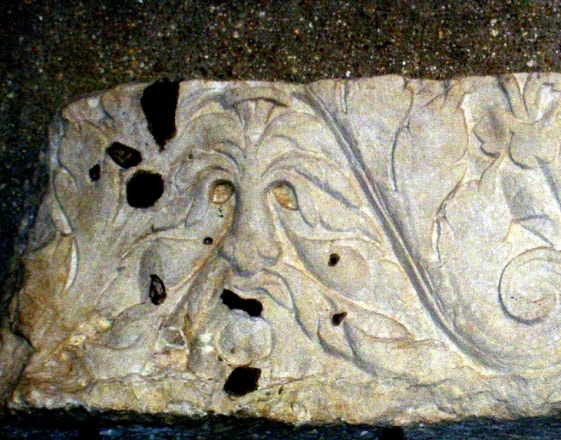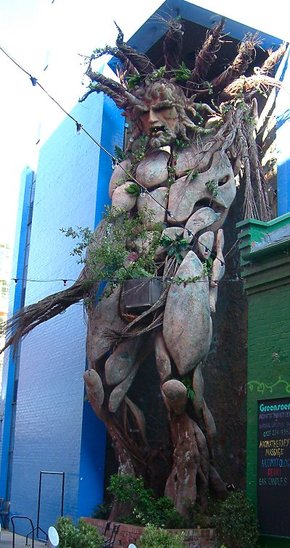History

The History of the Festival
Clun has hosted a summer festival or fete in the Castle Field out of living memory.
The contemporary festival draws on myths, fairy tales and folk lore, and re-imagines the time-old tale of seasonal change.
Clun has hosted a summer festival or fete in the Castle Field out of living memory.
The contemporary festival draws on myths, fairy tales and folk lore, and re-imagines the time-old tale of seasonal change.
|
The Green Man in history:
A symbol of man's interdependence with nature, artistic interpretations of the Green Man are found in both secular and religious contexts across the globe; often represented by a human-like face made from leaves and foliage or disgorging leaves from the mouth. In architecture, the likeness has often been subtle, tucked away or disguised, but its ubiquity both across countries and centuries suggests that artists continued to recognise that nature must always be respected alongside human endeavour. (source) Surviving artefacts prove the Green Man's place in the human psyche as far back as the 1st or 2nd century AD, but a statue of Dionysus, clad in leaves, (c.420 BC, in Naples) has been suggested to be the most likely precursor; indeed, Dionysus was originally a deity of wilderness, nature and agriculture, and only later became sidetracked by wine and hedonism! (source) The modern Green Man: If someone has already said it perfectly, there is nothing to be gained from re-working. Deepest thanks to Adrian Gardiner: “The Green Man is immortal. He has had, to date, four distinct lives: in art, in architecture, in nature and in today’s environmental consciousness. In his third reincarnation, the Green Man witnessed environmental destruction and slumbered. In the Industrial Revolution and the Victorian era he went back to the garden - in the wrought-iron gates of Kew, on urns at Biddulph Grange in Staffordshire. This was the era when botany became a respectable science. And in the past 30 years, the Green Man awoke and took charge of our ecological consciousness. He invented the Green Party, drew our attention to rain forests and recycling, developed cycle lanes and cheap public transport. And he paved the way for the Gaia theory, that the planet is a self-regulating organism which will always survive, despite mankind’s puny attempts to destroy it. The Green Man, 2,000 years old, is alive and well and living in a garden or cathedral near you.” -Adrian Gardiner. Saturday, 19th May 2001. The Scotsman. The Scotsman Publications Ltd) If you are interested in the history of the Green Man, have a look at these sites:
Green Man Enigma Green Man Conservation The Green Man in History |
A Riddle
I am born on May Morning - by sticks, bells, and ribbons I am the sap - in the dark root I am the dancer - with his six fools I am the tump - behind the old church I am the lost soul - under the misericord I am the oak - against the stars I am the face - that peers through the leaves I am the fear - in a child' s mind I am the demon - on the roof-boss I am killed in October - and laid on church altars I am the guiser - on the bright bonfire I am the old grain - sown with the seed I am the flame - in the pumpkin ' s grin I am the spirit - in the kern-baby's bosom |



